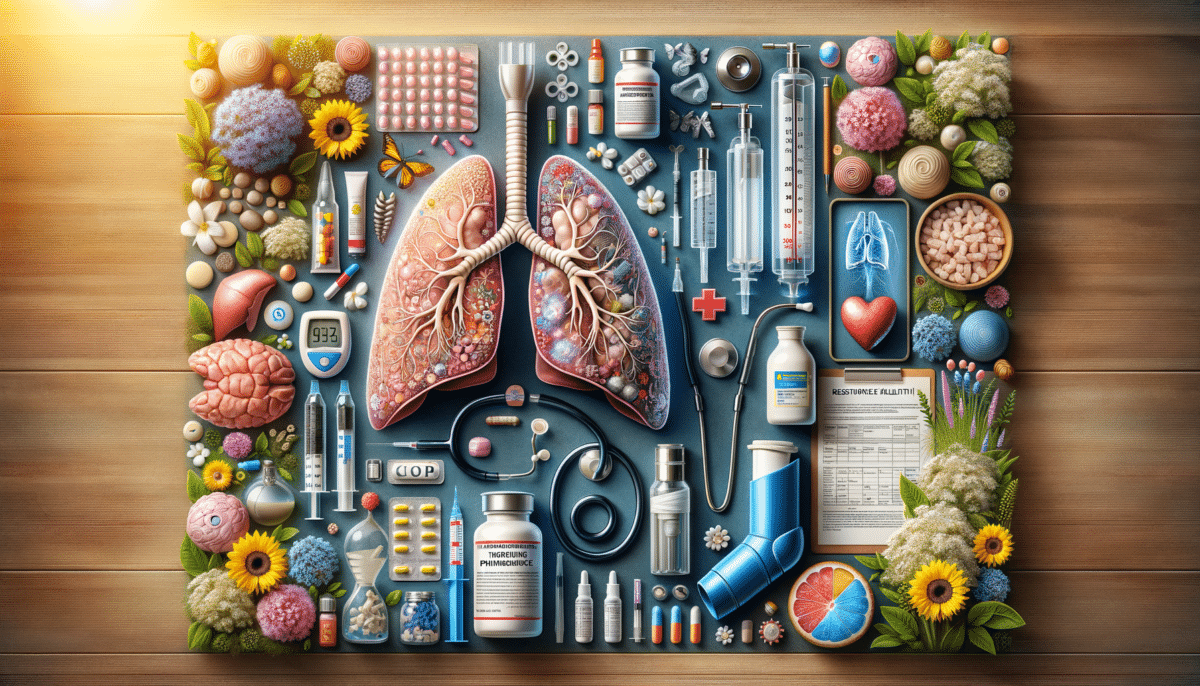Understanding Chronic Obstructive Pulmonary Disease (COPD)
Chronic Obstructive Pulmonary Disease, commonly known as COPD, is a long-term lung condition that obstructs airflow and makes breathing difficult. It is a progressive disease, meaning it typically worsens over time. The primary causes include long-term exposure to irritating gases or particulate matter, most often from cigarette smoke. COPD encompasses both emphysema and chronic bronchitis, conditions that often occur together and contribute to the overall severity of the disease.
Understanding the symptoms of COPD is crucial for early detection and management. Common symptoms include:
- Chronic cough
- Shortness of breath, especially during physical activities
- Frequent respiratory infections
- Wheezing
- Chest tightness
These symptoms can significantly impact an individual’s quality of life, making daily activities challenging. It’s essential to recognize these signs early and seek medical advice for proper diagnosis and treatment.
Diagnosis typically involves a combination of medical history evaluation, physical examination, and lung function tests such as spirometry. This comprehensive approach helps in assessing the severity of the condition and formulating a personalized treatment plan.
Current Treatment Options for COPD
Treating COPD effectively requires a multifaceted approach. While there is no cure for the disease, various treatments can help manage symptoms and improve quality of life. The primary goals are to relieve symptoms, slow the progression of the disease, and prevent complications.
Medications play a crucial role in managing COPD. Commonly prescribed medications include:
- Bronchodilators: These help relax the muscles around the airways, making breathing easier.
- Inhaled steroids: These are used to reduce airway inflammation and prevent exacerbations.
- Combination inhalers: These include both bronchodilators and steroids for comprehensive management.
In addition to medication, pulmonary rehabilitation is a highly beneficial component of COPD treatment. It involves a structured program of exercise, education, and support to help patients manage their condition and improve their overall well-being.
For patients with severe COPD, oxygen therapy may be necessary to ensure adequate oxygen levels in the blood. In some cases, surgical options such as lung volume reduction surgery or lung transplantation may be considered for those who do not respond to other treatments.
Lifestyle Changes and Management Strategies
While medical treatments are vital, lifestyle changes also play a significant role in managing COPD effectively. Quitting smoking is the most critical step in slowing the progression of the disease. Smoking cessation programs and support groups can provide the necessary resources and encouragement for individuals attempting to quit.
Regular physical activity is encouraged, as it helps maintain muscle strength and improves cardiovascular health. Patients should consult their healthcare provider to develop a safe and effective exercise plan tailored to their abilities and limitations.
Diet and nutrition also impact COPD management. A balanced diet rich in fruits, vegetables, lean proteins, and whole grains supports overall health and can help maintain a healthy weight, which is crucial for optimal lung function.
Additionally, patients should stay up-to-date with vaccinations, such as the flu and pneumonia vaccines, to prevent respiratory infections that can exacerbate COPD symptoms.
Finally, stress management techniques, such as mindfulness and relaxation exercises, can help reduce anxiety and improve quality of life for individuals living with COPD.
